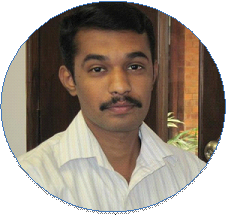Facilities
Faciltiies
Overview
Welcome to Ecoinformatics Lab
Our Mission is to advance the development of geospatial science to address biodiversity conservation and sustainable development related questions. The Lab actively collaborates with researchers within and outside ATREE to understand the environmental problems through aerial route and analyzing the landscape & biodiversity with spatial as well as aspatial data. We envision the Lab as a knowledge hub for application of geospatial technologies in interdisciplinary conservation research.
Lab objectives
- Enable the use of geospatial science to enhance the value of social, ecological and interdisciplinary research and outreach activities conducted at ATREE
- Conduct and assist in applied research on conservation planning and spatial ecological modelling
- Assemble, organize and disseminate information (ecological, biophysical, and socio-economic) in appropriate formats for a wide range of users interested in conservation and management of natural resources
- Build capacity among environmental professionals in the use of spatial analytical tools and modelling
Facilities
The Ecoinformatics Lab is recognized as a Resource Centre for Clark Labs. Licensed to use IDRISI software and its extensions for research and training purposes since 2004, the Lab has been recently given access to the TerrSet Geospatial Monitoring & Modelling System . With Clark Labs support, the Lab is engaging a variety of landscape ecology, land change modelling and spatial modeling activities.
The Lab is also licensed for the use of ESRI ArcGIS, ERDAS Imagine and E-cognition software. The Lab also uses opensource geospatial software/tools like QGIS, Geoserver, Openlayers, PostgreSQL(POSTGIS)...etc.
Projects
Ongoing Projects
- Optimising forest benefits whilst minimising impacts of emerging zoonotic diseases: co-developing an interdisciplinary tool for forests in India
Completed research
- Living Spaces as Environmentally Unjust Public Goods: Pollution and the Asymmetrical Distribution of Physiological and Psychological Ailment in Coastal-Urban and Hill-Town Tamil Nadu
- Landuse/Landcover Mapping and Change Detection of Arkavathy and Noyyal River Basin for ACCUWa Project
- Landuse/Landcover Mapping and Change Detection for Bhavani Sagar Catchment for ASSAR-CARIAA project
Spatial Archive
ATREE spatial archive is a platform for sharing all the spatial data available at Eco informatics Lab within the ATREE community. This archive is accessible for everyone within ATREE only. Access to project outputs need permission from respective PIs.
People
- Abhishek Samrat, Research Assistant, Ecoinformatics lab, abhishek.samrat@atree.org
- Gowri Uday Navrathna, Research Assistant, gowri.uday@atree.org
Outputs
Course offered by Ecoinformatics Lab to ATREE Academy PhD programme
Workshops Conducted
ATREE-ODK workshop 2018
ATREE-ODK workshop 2019
Plant taxonomy lab
The herbarium, a dried plant repository is part of the plant taxonomy lab at ATREE. We have over 400 authenticated plant collections from forests of southern Western Ghats largely from Kalakad Mundanthurai Tiger Reserve (KMTR), Biligiri Rangaswamy Temple Wildlife sanctuary, and Male Mahadeshwara Hills. The collections are stored at Bangalore and at the Biligiri field station, BRT and Agasthyamalai Community-based Conservation Centre (ACCC), Singampatti, Tirunelveli. Data about the herbarium specimens, such as location, date, forest type, species name, family, characters observed in the field, uses, local name etc, are entered in the computer database Biota, specially designed for archiving museum specimens. The lab plans to maintain a digital pictures library linked to the herbarium database and made available to research purpose through the net.
Invertebrate museum
Insects

 ATREE's invertebrate museum houses 100,000 insect specimens representing more than 1000 species belonging to 180 families and 19 orders. Specimens have been identified to family level, with 130 species of dung beetles, 80 species of ants, 60 species of Chalcidoidea and 30 species of Carabidae identified to species level. The collection represents rare families like Meinertellidae (Microcoryphia), Laemophloeidae (Coleoptera), Sminthuridae (Collembola), Gonatopodinae (Hymenoptera), and rare species of other taxa.
ATREE's invertebrate museum houses 100,000 insect specimens representing more than 1000 species belonging to 180 families and 19 orders. Specimens have been identified to family level, with 130 species of dung beetles, 80 species of ants, 60 species of Chalcidoidea and 30 species of Carabidae identified to species level. The collection represents rare families like Meinertellidae (Microcoryphia), Laemophloeidae (Coleoptera), Sminthuridae (Collembola), Gonatopodinae (Hymenoptera), and rare species of other taxa.

The Conservation Genetics Lab at ATREE comprises of people with interests in ecology, evolution, biogeography and conservation. The lab uses a range of molecular markers as well as field-based approaches to answer questions that are basic or applied in nature. It combines the field of Systematic Biology, Biogeography, Population Genetics, Landscape Genetics, Species Distribution Modeling and Genomics to understand evolutionary and ecological dynamics of species.
The lab addresses issues related to conservation status of a wide array of organisms, reconstruct phylogenies, elucidate patterns and levels of differentiation between geographically isolated populations, assess impacts of fragmentation and harvesting and investigate demographic parameters of populations. It also develops DNA barcodes for economically important species and undertake species recovery of near-extinct species.
The Post Doc’s, Ph. D students, Research Fellows and interns associated with the lab also spend much time in Western Ghats, Eastern Himalayas, Eastern Ghats which include tropical forests, shola-grasslands, Myristica swamps, Temperate forests, the Himalayan Mountains and the Dry forests.
The Conservation Genetics lab is equipped with state of the art instrumentation including PCR’s, gel documentation system, deep freezers, centrifuges, ovens, incubator shakers, bead beater, DNA quanta, ice flaker, distillation unit, LAF’s etc. to carry out genetic analyses of plants, amphibians, insects, molluscs and microbial systems.
Lab Members – POST DOCTORAL FELLOWS

DR. THRIVENI H. N.
Dr. Triveni is a DBT Post Doc working on Phyllanthus indofisheri, commonly called as Gooseberry (or amla) is an important Non Timber Forest Produce (NTFP) species. She aims to understand the impacts of harvesting on the genetic structure of the populations of these using molecular markers. Her larger interest includes conservation actions of threatened medicinal plants of Western Ghats.

DR. SHRUTI HEGDE
Dr. Shruti is a SERB-National Postdoctoral Fellow working on the population status, genetic diversity, propagation and rehabilitation methods of two narrowly endemic plants Curcuma bhatii and Impatiens raziana of the Western Ghats, India. Shruti has a specialization is medicinal plants, phytochemistry and conservation Biology.

Dr. SRIRAMA R
Rama is a recipient of the Young Scientist fellowship for doing Post Doctoral research by the Science and Engineering Board (SERB), Department of Science and Technology, Govt of India for studying the Origin and diversity of Wild Populations of Piper nigrum (Black pepper) in Western Ghats, India. She intends to address the biogeographical origins and domestication of Piper in India. She is also studying the genetic diversity and population structure of P. nigrum by developing species-specific microsatellite markers.

DR. JAGADISH M. R
Jagadish was a SERB –DST young scientist. He has worked on conservation and restoration of the Myristica Swamps in the Central Western Ghats. Jagadish has worked on the species recovery of Gymnocranthera canarica, one of the endemic and endangered species of the Myristica swamps. He is currently an Assistant Professor at College of Forestry, Sirsi.

Dr. AVIK RAY
Avik Ray was a SERB- DST young scientist, who was worked on the evolution of Rhododendron across Himalaya and Western Ghats. Specifically, employing widespread species Rhododendron arboreum, he has tested the central Indian disjunction hypothesis with molecular markers and ecological niche model. He is currently an Associate Scientist at Center for Interdisciplinary Studies at Kolkata.
Ph.D STUDENTS
 BARKHA SUBBA
BARKHA SUBBA
Barkha Subba is a PhD scholar at ATREE. Her research work focuses on the distribution mapping and community assemblage of the Himalayan amphibians. Following her keen interest in the Himalayan biodiversity, history, culture and society and a love for travelling and photography she has co- authored a coffee table book “Framed Himalaya – Lachen Valley”.
 SANDEEP SEN
SANDEEP SEN
Sandeep is interested in assessing the role of biogeography, ecology and climate in driving speciation patterns and the process determining current species distributions. His doctoral research is primarily focused on developing dated phylogenetic hypothesis for the tropical plant Piper in Peninsular India, to test the role of several historical process shaping its current distribution patterns. He uses comparative phylogeographic approaches to gain insights into the evolutionary trajectories of Black Pepper (Piper nigrum) within the Western Ghats biodiversity hot spot. The findings from his research could aid in efficient insitu germplasm conservation programs.
 PRITI HEBBAR
PRITI HEBBAR
Priti is an amphibian enthusiast working and for her doctoral studies has been working on the ecology and conservation genetics of Nyctibatrachus spp. in the Central Western Ghats. She has also been a part of the team that has discovered a number of new amphibians in the Western Ghats.
 GEETHIKA E
GEETHIKA E
Geethika is a biotechnologist and has been working on Phyllanthus emblica (amla). For her doctoral studies, she has been studying the impacts of harvesting on the genetic structure of the population of these species across the Southern Karnataka.
 BHAVANI SHANKAR M.
BHAVANI SHANKAR M.
Shankar has a Master’s Degree in Biotechnology from Loyola Academy Degree and PG College. His research interests lies in the applications of genetics in species conservation. He is focused on studying the effects of various ecological, environmental and human induced factors on the genetic diversity and gene flow of the plant species. Specifically his doctoral research is focused on population genetics of one of the important gum-resin yielding tree species, Boswellia serrata. He has earlier worked on population genetics of tigers and leopards at CSIR-CCMB.
RESEARCH FELLOWS
 POWNITHA K.V
POWNITHA K.V
Pownitha has a Masters of Science in Forestry and is working as Junior Research Fellow, in NMPB project on “Identification of Elite Types, Molecular Characterization and Conservation of Highly-traded and Threatened Medicinal Plants in the Central Western Ghats. In this project, she is focusing on chemical and molecular characterization of selected individuals. She is also developing nursery techniques of the selected elite individuals.
 SEETHAPATHY G.S
SEETHAPATHY G.S
Seethapathy worked as a researcher in a project funded by Department of Biotechnology, and was involved in the development of DNA barcodes for important medicinal plants. He was also involved in analyzing the extent of adulteration and substitution in herbal raw drugs trade using DNA barcodes. He is currently doing his Ph. D at University of Oslo, Norway.
 RAGAV PAVAN TUNGA
RAGAV PAVAN TUNGA
Pavan was a Senior Research Fellow in a DBT funded Project on the conservation of Myristica malabarica, one of the important NTFP species in Uttara Kannada District. He worked on the genetic structure of this species in the Western Ghats. He is currently doing his Ph. D in Asoka University.
 RANI SAGGARE
RANI SAGGARE
Rani was a Research Assistant who worked on various projects. She was involved in studying the genetic structure of Rhododendron arboretum, Gymnocranthera canarica and Piper nigrum. She is currenly doing her Ph.D at University of Brunswick, Canada.
 SUMANGALA R. C
SUMANGALA R. C
Sumangala was a Senior Research Fellow in a DBT funded project on Species recovery of endangered species in Western Ghats. She has also worked on the population genetic structure of Saraca asoka. Currently she is doing her Ph.D at Madurai Kamaraj University.
 NAVEEN L
NAVEEN L
Naveen was a senior Research Fellow in a DBT funded project and was closely involved in species recovery of some of the critically endangered species of the Western Ghats.
Welcome to the home page of the Water and Soil Lab, a dynamic and innovative research group

Water and soil lab at ATREE was established in April 2013.
Our broad mission is to carry out research on water quality issues. The laboratory is well equipped to measure and quantify various physical, chemical and biological pollutants in water and soil.
The lab consists of three units:
Projects:
1. Ongoing Projects:
- Strategic in-stream systems: A Decentralised anticipatory approach to wastewater contamination in Bangalore
- BES for the treating of wastewater and monitoring of effluent quality.
- Decentralized wastewater treatment-global innovation for sustainable rural communities.
- SunRISE
- Citizen’s dashboard for Bengaluru’s Lakes
2. Completed Projects:
- Adapting to Climate Change in Urbanising Watersheds (ACCUWa).
- Groundwater and sanitation nexus in Peri-Urban Small Towns of Bangalore.
- 2035 Vision for Sustainable and Equitable Water and Wastewater Management in Bangalore.
Publication:
- Lele S., V. Srinivasan, B. K. Thomas, P. Jamwal, 2018 Adapting to climate change in rapidly urbanizing river basins: insights from a multiple-concerns, multiple-stressors, and multi-level approach, Water International, (43), 2 (2018): 281-304
- Biswas, D., P. Jamwal 2017 Swachh Bharat Mission: What we need to know about groundwater contamination in peri-urban India Economic and Political Weekly Vol. 52, Issue No. 20.
- Thomas, B.K., S. Lele, V. Srinivasan, P. Jamwal, 2017 Rethinking Resilience in Urbanizing River Basins Seminar, 694: 55-8.
- Jamwal, P. 2017 Fate of nutrients in human dominated ecosystems - A case study of Jakkur Lake in Bengaluru. Resonance, (22), 3 (2017): 79-290.
- Jamwal, P.,M.S. Mohan Kumar 2016 Effect of flow velocity on chlorine decay in water distribution network: A pilot loop study Current science ,(114) 8, 1349-1354.
- Jamwal, P., M.N. Naveen and Y. Javeed. 2016 Estimating fast and slow reacting components in surface water and groundwater using a two-reactant model. Drinking Water and Science Journal, 9 (2016):19-25.
- Jamwal, P., T. Md. Zuhial., P. Raje. Urs. V. Srinivasan, S. Lele 2015 Contribution of Sewage treatment to pollution abatement of urban streams: A case study from Bangalore Current science, (108), 4: 677-685.
- Srinivasan, V., B. K. Thomas, P. Jamwal and S. Lele 2013 Climate vulnerability and adaptation of water provisioning in developing countries: approaches to disciplinary and research-practice integration Current Opinion in Environmental Sustainability, (5), 3-4 (2013): 378-383.
- Jamwal, P., Mittal, A.K and Mouchel, J.M. 2011 Point and non-point microbial source pollution: A case study of Delhi Physics Chemistry of Earth. (12), 36: 490-499.
- Jamwal, P., and Mittal, A.K. 2010 Reuse of treated sewage in Delhi city: Microbial evaluation of STPs and reuse options Resource Conservation and Recycling, (4), 54 (2010): 211-221.
- Jamwal, P., Mittal, A.K, Mouchel, J.M 2008 Effects of urbanisation on the quality of the urban runoff for Delhi watershed Urban water, (3), 5:247-257
- Jamwal, P., Mittal, A.K, Mouchel, J.M 2008 Efficiency evaluation of sewage treatment plants with different technologies in Delhi (India) Environmental Monitoring and Assessment, (1-4), 153: 293-305.
- Jamwal, P., Mittal, A.K, Mouchel J.M 2006 Study of the effect of different factors on fate of indicator micro-organisms in urban sewer systemsEnvironmental Engineering and Management Journal, (3), 5 (2006): 375- 381.
Team Members: